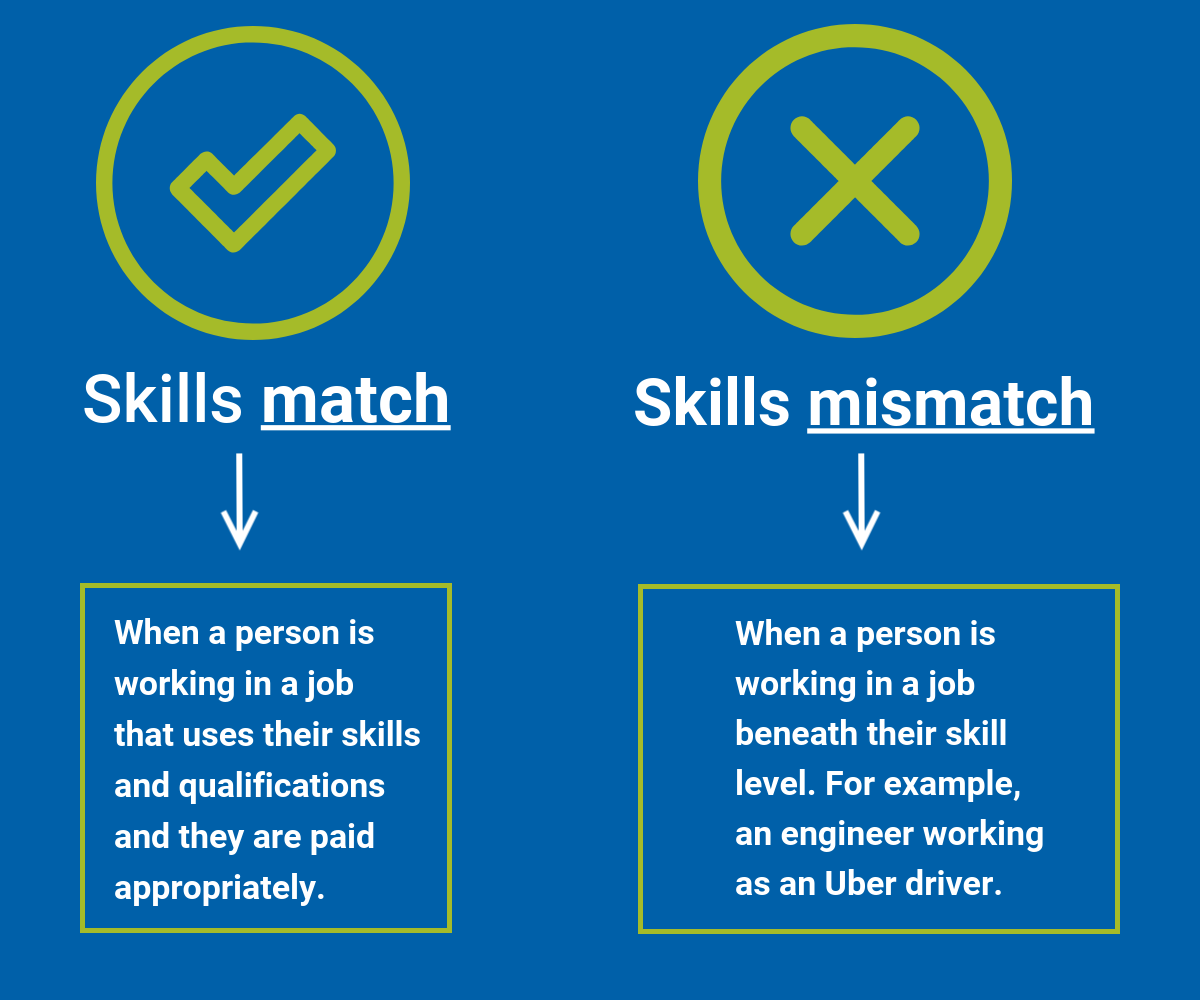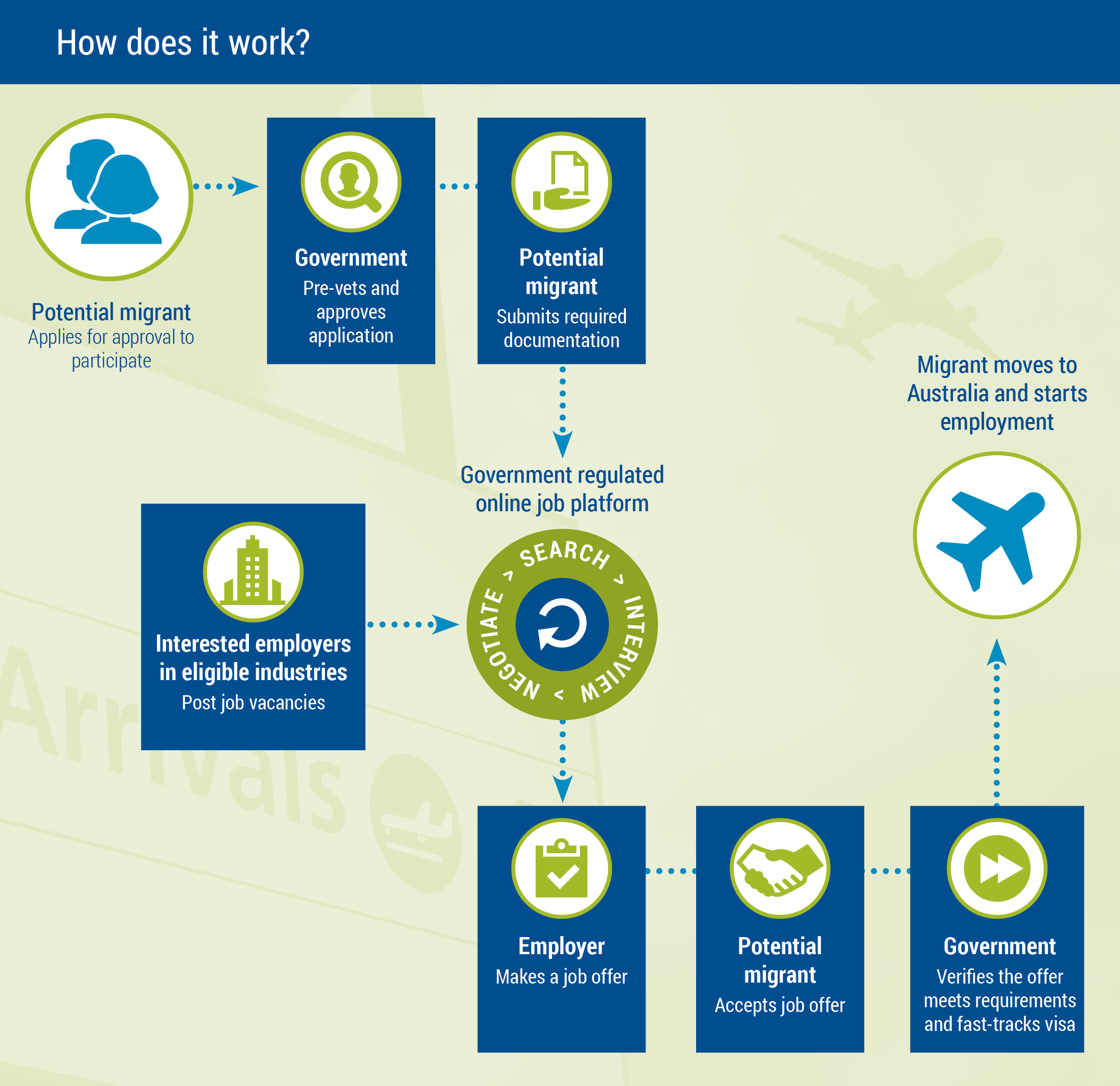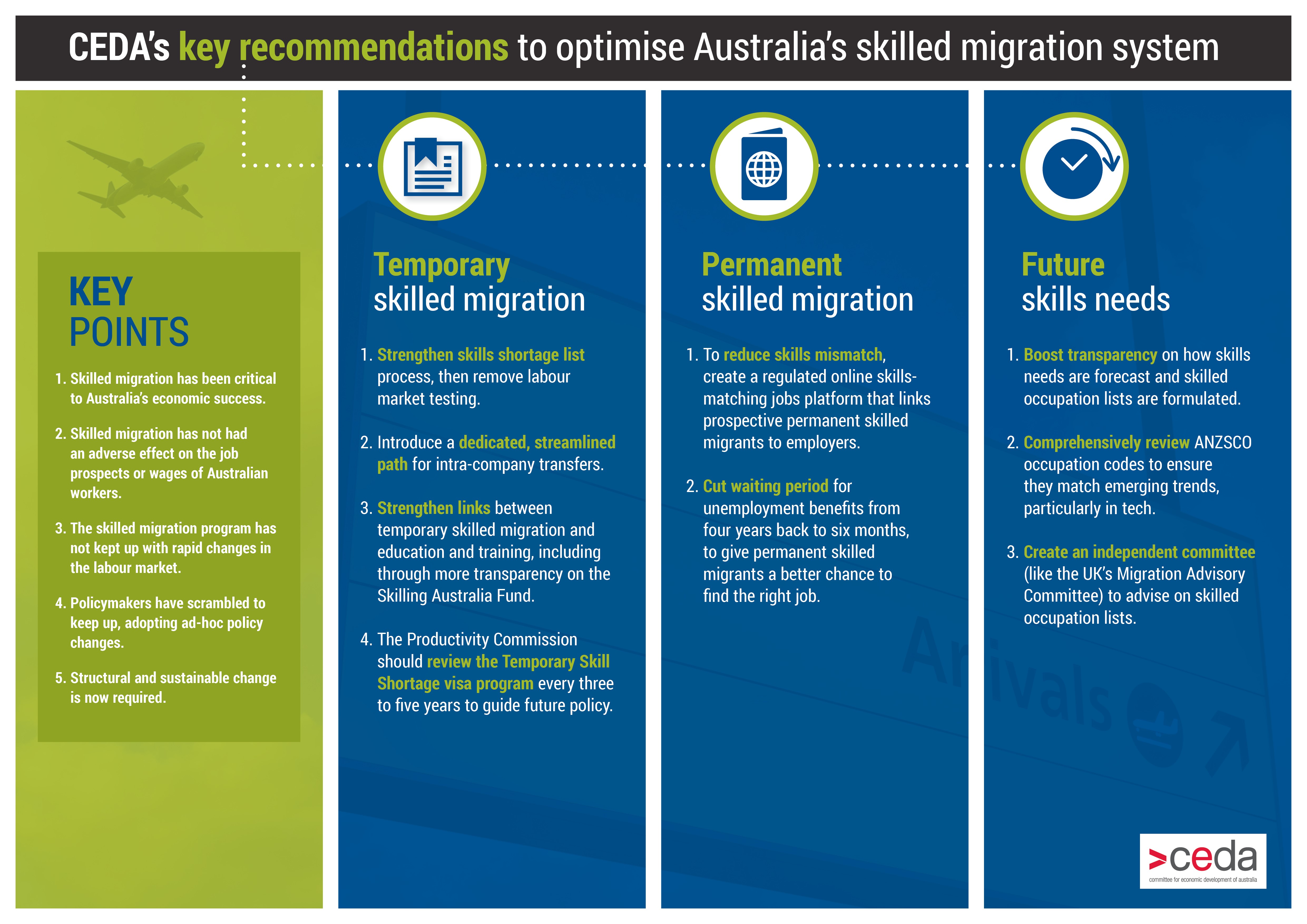Explore our Climate and Energy Hub
Overview
Permanent migration has been a central feature of Australia’s economic development over the last century. Australia welcomed more than seven million permanent migrants in the last 70 years, of which more than two million arrived in the last decade.
On average, these migrants are younger than the Australian population, more likely to hold post-secondary qualifications and facilitate important foreign trade and investment relationships. As CEDA demonstrated in its Effects of Temporary Migration report, recent waves of migrants have not had an adverse impact on the wages or jobs of Australian-born workers.
The permanent migration program has evolved over time in line with economic imperatives, political attitudes and societal expectations. However, it has retained a consistent focus on selecting migrants with the skills to complement the domestic workforce.
The skills focus has intensified in the last 25 years as skilled migration became the dominant stream of the permanent migration program and Australia’s points based skilled migration system became the envy of advanced economies around the world. Other nations such as the United Kingdom have sought to replicate Australia’s program to maximise the benefits of migration and retain community support for it in the wake of Brexit.
COVID-19 has disrupted these long-term trends as the health response restricts offshore arrivals. Australia therefore confronts its first period of net negative migration since World War II. This will be a substantial drag on economic growth and exacerbate the long-term headwinds of an ageing population. At the same time, policymakers and the community will be focused on elevated rates of unemployment and helping domestic workers transition to new occupations, even as pockets of skills shortage persist in some critical sectors.
Australia’s skilled migration system has served us well, but there are areas where it can and must be improved.
Nearly
one in four
permanent skilled migrants
are working in a job beneath their skill level

Since the late 1990s, most of the permanent migrants arriving in Australia have been skilled migrants. And the system has mostly worked well, with migrants having higher rates of employment, participation and wages than local-born Australians.
However, concerns have been raised about whether some categories of skilled migrants are required, and, in particular, the high levels of over-education among migrants. Migrants have long faced barriers to full and effective participation in the labour markets of destination countries. But for a system that seeks to strictly target skills that are in demand, it is surprising that many migrants to Australia end up in jobs beneath their level of skills and experience.
The Continuous Survey of Australia’s Migrants (CSAM) gives us some insights into the barriers faced by skilled and family migrants in their search for employment and a career in Australia. For the most part, it appears that our skilled migration system is working well, with about 71 per cent of people either working in their nominated occupation or at a skill level equivalent to or higher than their nominated field within 12 months after arrival. But this is not a universal experience: about 23 per cent of surveyed permanent skilled migrants experienced skills mismatch, that is, they found themselves in a job that was lower than their skill level 12 months after arrival.
Other studies show that migrants have over-education rates of up to 30 per cent compared with seven per cent among Australian-born workers.
Download the full report for more information on the extent of skills mismatch and the factors that drive it.

This skills mismatch cost at least
$1.25 Billion
In foregone wages between 2013-18
Using the numbers of people experiencing skills mismatch, their skill level and median wages by skill level data, CEDA estimates that skills mismatch identified through the Department of Home Affairs Continuous Survey of Australian Migrants (CSAM) is the equivalent of $1.25 billion in foregone wages in 2018 for migrants arriving between 2013 and 2018. A 12-month duration for skills mismatch is assumed because the survey only identifies skill mismatch as it occurs in the first 18 months of arrival. There is no reliable basis upon which to estimate or assume how long that mismatch persists beyond that initial period. On this basis, the figure is a conservative estimate given that skills mismatch will persist for some and leave an earnings gap across their lifetime.
Estimates of how many people were experiencing skills mismatch were obtained from the CSAM data. The variable used contains responses from migrants during Wave 2 who were asked whether they were working in their nominated occupation. We can identify the skill level mismatch by looking at the difference between the skill level of their actual occupation and the skill level for their nominated occupation for permanent migration (ANZSCO skill levels 1 to 5). The skill level is measured by the level or amount of formal education, the amount of previous experience and the level of on-the-job training received.
We then used ABS data to identify the wage differential that each skills mismatch brings about. That is, the difference between the median wage for the skill level of the occupation they nominated for and the median wage for the skill level of the occupation in which they are employed. More details of this calculation are available in the Appendix.
While our estimates use foregone salary earnings, we acknowledge this is not the only avenue through which skills mismatch negatively affects the Australian economy. While lower wages have a flow-on effect on tax receipts, we are unable to measure other impacts on the broader economy that occur through skills mismatch, such as unfilled vacancies, potential for crowding out in lower skill occupations, lower levels of productivity and innovation spillovers.
Deloitte Access Economics has estimated the potential economic losses caused by skills mismatch in Queensland. Their 2019 report examining this issue found that 50 per cent of all migrants in the state were not using their skills and experience. The report also found feelings of discouragement were high among migrant workers, with a number stating they felt misled about their likelihood of gaining employment in Australia. The report concluded that skills mismatch cost Queensland $250 million in Gross State Product (GSP) over the 10 years to 2019 through lost wages and economic activity.
Migrants who are facing skills mismatch, in particular those who are over-qualified for their jobs, can also suffer mental health consequences. A 2012 study found self-reported mental health measures declined for both English and non-English speaking migrants who declared that they only used their skills rarely, sometimes, or never, compared with those who used them often. These effects persisted even after controlling for other characteristics such as physical health, country of birth, age and sex.
Download the full report for more on how skills mismatch is costing Australia.

In addition to many migrants working beneath their skill level, the system is slow to respond to rapidly emerging skills needs, such as digital and data. As we emerge from COVID-19 we need a skilled migration system that is nimble and responsive to the needs of the economy.
As the economy recovers, Australia’s skilled migration system cannot stand still. As our rate of net migration growth begins to turn positive again in 2022, the skilled migration system must be calibrated to support the needs of growing industries, while also retaining community confidence.
Access to the right skills at the right time and getting the right people into the right jobs is critical to enabling future investment and job opportunities, creating a vibrant and dynamic economy for the long-term.
The Federal Government recognises this, and has implemented changes such as the Global Talent Scheme. But band-aid measures in Australia’s migration system perpetuate a complex revolving door approach, with less transparency and greater uncertainty for users of the system.
Instead, Australia must progress structural and sustainable change to the skilled migration system so that it responds and evolves quickly as skills needs change.

Watch CEDA Senior Economist Gabriela D'Souza discuss CEDA's research into skills mismatch in permanent migration
As we emerge from COVID-19, we need a skilled migration system that is nimble and responsive to the needs of the economy.

Establish a new government-regulated online skills-matching jobs platform
Australia needs a new system of skills matching that improves the quality of job matches, so that migrants are using their skills and employers’ needs are being met.
CEDA proposes the establishment of a government-organised and regulated skills-matching platform that would allow employers to receive applications from, negotiate with and offer employment to overseas workers before they arrive in the country. Workers who receive a job offer on the platform would then be fast-tracked through the permanent residency (PR) process and be able to start their new job.
We do not propose that this platform replace the existing permanent skilled migration streams or the current system altogether at this time. Instead, this new stream would be accommodated within the Federal Government’s permanent migration cap. The initial number of places offered would be relatively modest (about 2000), to allow time to assess the best technology for the platform and evaluate its success in achieving better labour-market outcomes.
If successful, this approach could be applied more broadly across the permanent skilled migration program. It could also be used to identify skills needs, for labour market testing and for temporary skilled migration. For example, as more employers use the system, it could provide a rich and detailed real-time database for government on skills in high demand that are not being filled locally. This could assist in both migration policy design and in allocating funds to Australia’s training system.
Download the full report for more on CEDA's proposed skills-matching job platform.


The Australian Bureau of Statistics (ABS) should comprehensively update the Australian and New Zealand Standard Classification of Occupations (ANZSCO) codes to ensure that migrants with vital and cutting-edge skills can migrate to Australia and contribute to the maturing of our labour market. These codes have not been updated since 2013.
Predicting a country’s skills gaps is difficult. Australia’s approach has involved creating lists of in-demand occupations based on input from stakeholders including government departments, businesses and other industry bodies. More recently, the Federal Government created the National Skills Commission to help improve forecasting for both the skilled occupation list and apprenticeship funding.
The Federal Department of Education, Skills and Employment creates occupation lists after quantitative research on the skills needs of the economy. Qualitative information from roundtables, meetings and online submissions is added to this analysis. The information is then made public in the department’s traffic light bulletin publication, which notes changes to the lists and includes occupation removals (red), additions (amber) and movement between the short- and medium-long term lists.
As the department has noted, however, this process is hampered by the vague definition of what constitutes a skills shortage, insufficient data, the inherent inaccuracy in forecasting shortages and the time it takes to discover a labour-market shortage.
The occupations defined by the Australian and New Zealand Standard Classification of Occupations (ANZSCO) codes are outdated and inflexible, and have not been updated since 2013. As a result, in-demand occupations that do not readily fit within these codes can fall through the cracks.
For example, there has been rising demand for data scientists since 2015. Data provided to CEDA by job-search website SEEK shows that available jobs outstrip available candidates by a significant margin.
Despite this demand, the occupation of data scientist is nowhere to be found on the skilled occupation list. In 2019, the Federal Government announced that data scientists would be classified as “information and organisation professionals NEC”, which also includes electoral officers and lobbyists. Such band-aid solutions result from a system that is slow to respond to labour-market changes. Reports have long shown that the occupation codes are in dire need of updating. Without these updates, there is little scope for migrants with cutting-edge skills to enter the market.
By contrast, the UK’s Migration Advisory Committee conducts detailed analysis on how skills shortages are identified, and outlines in detail the methodology for each occupation on the final list. This list is reviewed periodically alongside analysis of the occupations that made it to the list and why they were included. In short, the smooth operation of the system relies on almost perfect information about the skills needs of the economy and up-to-date occupation codes.
Download the full report for more on how updating the ANZSCO codes can help give Australia the skills it needs.

To retain community confidence, the Federal Government should be more transparent about the data and methods used to assess whether occupations are deemed to be in-demand and included on skilled occupation lists.
In the longer term, Australia needs a new system of skills matching that maximises the number of good employer-employee matches, and delivers better and more timely information about labour market demand to state and federal governments. In the meantime, the current system must be made more transparent.
In CEDA’s Effects of Temporary Migration, we called for more transparency around the creation of the skills lists. There are just a few publicly available pages outlining the methodology underpinning the lists. Details of the government’s stakeholder engagements are not widely circulated, which makes scrutiny of the system difficult. It is also unclear how the government weights the information it receives. For example, how does a submission from a consulting firm noting a shortage of accountants compare with a submission from a civilian stating that there are too many accountants?
Two options to increase the transparency of the process used to create the skilled occupation lists include:
a. Periodically releasing the analysis that underpins the Federal Department of Employment’s traffic light bulletin report for skilled occupation lists.
b. Establishing an independent committee similar to the UK’s Migration Advisory Committee to undertake analysis, consultation and advice on the formulation of skilled occupation lists.
Download the full report for more on how a transparent skills lists creation process can improve permanent migration outcomes.

Reduce the Newly Arrived Resident’s Waiting Period for unemployment benefits from four years back to six months, to give permanent skilled migrants a better chance to find the right job.
The Newly Arrived Resident’s Waiting Period, which is the time permanent migrants must wait before becoming eligible for welfare payments, has steadily increased since about 1996, when it was increased from six months to 12 months. It was later increased to 24 months, and in January 2019 it was raised to four years.
This waiting period means that migrants who have nominated to work in a certain occupation – and cannot find a job that matches their skills immediately – might be forced to take any job initially, to keep themselves financially afloat. Hopefully, they find a job that matches their skills later but this may not always be the case. A study that looked at the effects of increasing the Newly Arrived Resident’s Waiting Period found that in some cases, when the unemployment rate of migrants decreased, the incidence of skills mismatch increased.
Migrants exhibit high rates of labour force participation, employment and lower rates of unemployment than the native population. This is an important aspect of our migration system and runs counter to some of the narratives that suggest people come to Australia to “live on the dole”.
The current waiting period does not give migrants the best chance of making it in the Australian labour market. It forces migrants to accept the first job they can get, rather than to wait for one that is more in line with their nominated occupation.
Download the full report for more on how supporting permanent migrants through unemployment can limit skills mismatch.
These recommendations are part of CEDA's wider research into Australia's skilled migration system
Optimising Australia's permanent skilled migration system builds on the findings of CEDA's 2019 report, Effects of temporary migration.


